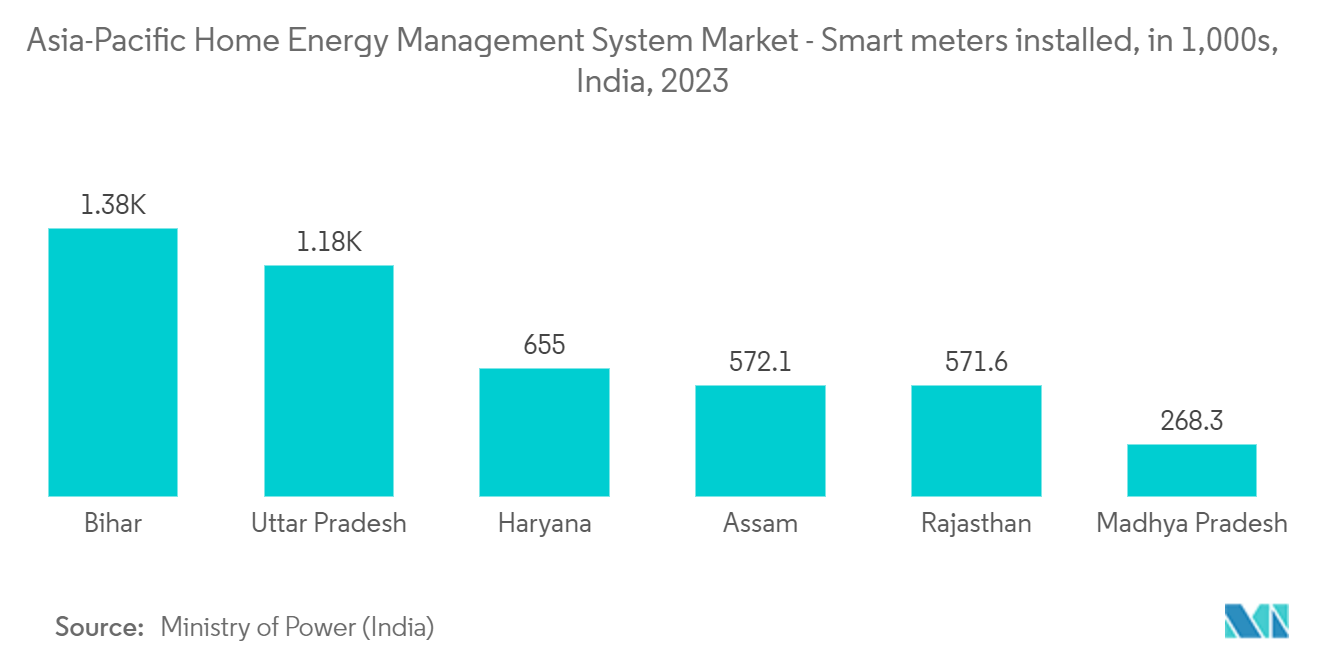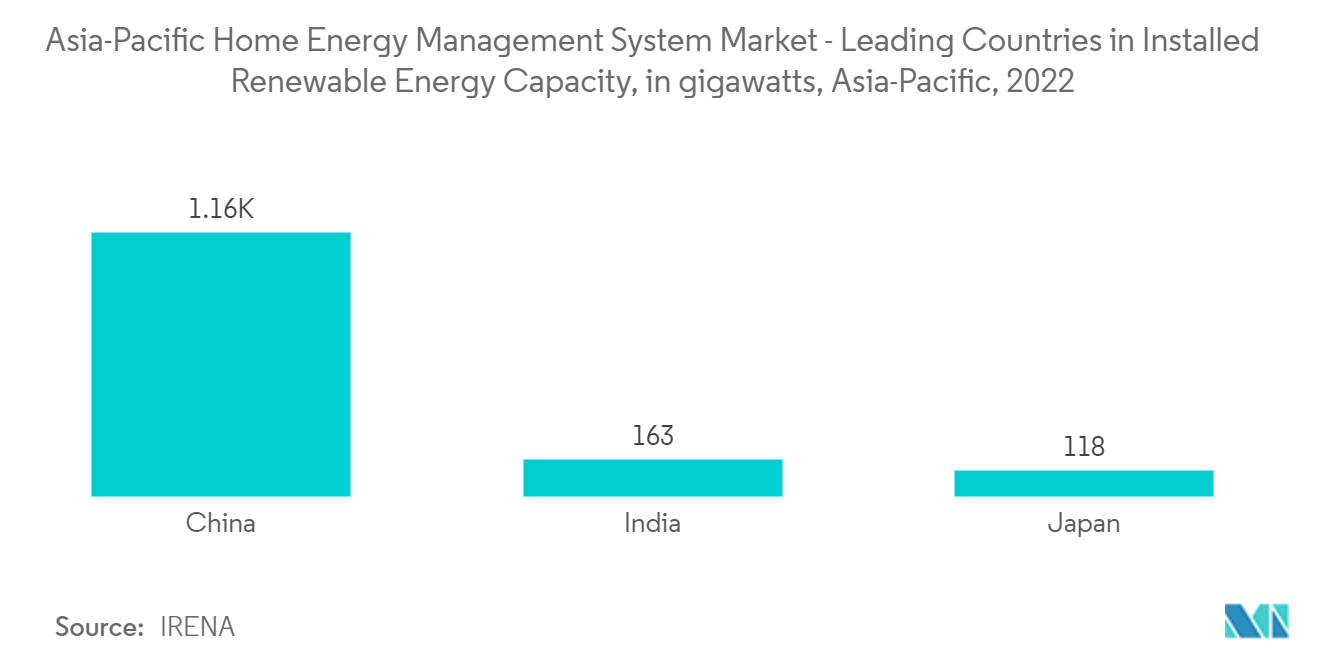Market Trends of Asia-Pacific Home Energy Management System Industry
Hardware Component Holding Significant Market Share
- These systems allow the user to monitor energy usage and production and manually control or automate energy use within a household. With the help of these systems, a homeowner can remotely control various aspects of their home. It combines control, scheduling, and user information. Home energy management systems enable customers to modify their energy consumption patterns based on consumption details received through these systems. It includes smart meters, hub devices, smart plugs, lights, temperature sensors, smart devices, and others.
- Asia-Pacific is a diverse region with the potential to drive up demand for home energy management systems due to the significant production of smart meters in India and China. According to the Ministry of Power (India), as of April 2023, the Indian state of Bihar, with over 1.37 million smart meters, had the highest number of smart meters installed nationwide. Uttar Pradesh and Haryana followed.
- Furthermore, increasing the number of connected devices through the Internet of Things (IoT) may further create opportunities in the studied market. In April 2023, OnePlus announced its 5G router at the Cloud 11 event, with support for Wi-Fi 6 connectivity, 4G/5G SIM connectivity, a Home Hub with Matter protocol quality set, Home Mesh network support, and LED indicators.
- Also in September 2022, the EDMI launched the brand of the new solution, MIRA, for use in smart metering systems, heralding the bag of value and choice for the clients and customers of the Global Energy Solution Leader in retail, distribution, and metering services. Using industry-standard protocols like DLMS and IDIS and communication technologies like RF mesh, 4G, and NB-IoT, MIRA AMI facilitates the installation of various electrical devices. All upstream and downstream AMI systems can be easily and seamlessly integrated with MIRA AMI. This kind of innovation will accelerate market growth in the country.
- These improvements have mainly resulted from deploying smart meters, DES, and energy storage technologies but have also seen numerous pilot projects and developments into innovations like virtual power plants (VPPs), blockchain, and vehicle-to-grid (V2G) technologies. Additionally, the Japanese government's plans to spend JPY 20 trillion promoting investments in new power grid technology, energy-saving homes, and other technology to reduce the nation's carbon footprint may further drive the studied market growth.

China to Experience Significant Market Growth
- China dominates the Asia-Pacific home energy management market by country. The high penetration of solar PV and electric heating appliances helps grow the market. According to Saur Energy International, China installed over 87 GW of new solar capacity in 2022, a growth rate of over 60% compared to the previous year. Around 65%, or 55 GW, came from rooftop solar alone.
- In addition, according to IRENA, China was a significant player in renewable energy installations, with a capacity of around 1,161 gigawatts in 2022.
- A massive population in China is putting immense pressure on the government to increase the energy supply. According to preliminary data from the National Bureau of Statistics of China in January 2023, the Chinese population slightly decreased by 850,000 to around 1,411.75 million in 2022 and is expected to grow in the forecast period. Additionally, almost 6.5 million new residential properties were built in China recently, an increase from the previous years. Since the 1998 housing reform, the number of new homes has kept growing for over a decade.
- Furthermore, in August 2022, the Xiaomi Mijia Smart Socket 3 was released in China for 59 yuan. It helps to turn regular household devices, such as lamps and kettles, into smart gadgets. This also allows them to be controlled via an app or voice commands and linked with other items in the smart home network.
- In addition, in May 2022, BroadLink, China's significant smart home solution provider, launched the FastCon BLE smart home solution. BroadLink has applied FastCon BLE technology to a series of unique products, including the Starter Kit (which contains three smart bulbs, one scene switch, and one mini hub), as a pioneer in the smart home industry. Such developments in smart devices may further propel the studied market's growth in the region.
- Furthermore, increasing investment in grid digitization by implementing advanced communications technologies drives the growth of the residential energy management market. Over the next decade, China is expected to invest USD 6 trillion in infrastructure as part of its urbanization development program. China and the economy, which have signed a cooperation agreement with China on the Belt and Road Initiative (BRI), are rising as a share of the world economy.
- Moreover, governments are investing in various initiatives, such as renewable energy, adopting solutions that enhance the power grid's efficiency, and sanctioning the use of technologies that are not efficient. Further, under the theme of SCE, Smart Technology Empowering Economy, Enriching Life, 54 projects valued at CNY 1 billion were signed at the ongoing Smart China Expo (SCE) 2022 in Chongqing, southwest China. These projects, 80% of them in strategic emerging industries, aim at advancing Chongqing's smart city ambitions and growth as a smart manufacturing powerhouse.


